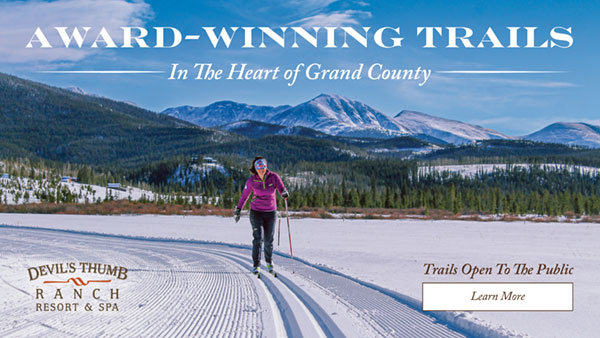After a bit of a slow start, the 2020-21 ski season has established itself through most of December with some consistently seasonable temperatures, and enough moisture to assure us of having a white Christmas. The drought of this past summer and fall is not completely over, but at least there is enough snow on the ground to provide a resemblance of normalcy. Many of the smaller storm systems that graced our valley during early to mid December did so without a lot of bluster, allowing for accumulations to cover the meadows with enough snow to leave at least the perception that trail surfaces are well-covered. Only a couple of windy days redeposited snow from open areas to sheltered ones.
Christmas week, however, began with temperatures that felt more like March, leaving parking lots slushy, and at the end of the day, some snowy surfaces slightly crisped like a lightly-toasted marshmallow. Areas that had been disturbed enough to bring up some darkness, expanded like cancerous growths with the warmth. Deep in the forest, with a little elevation, there is a relatively consistent 2 foot snow depth that lacks any sort of base or hard layers to protect ski bases from what lurks below. Closer to trailheads, at lower elevations and on the valley floor, the snow coverage is deceptive, appearing to be plump and full, while in actuality, it is only skin deep, covering the irregularities of the ground surface well enough to entice one to leave the packed trail, but not enough to keep edges from sparking as metal meets granite when skis slice through the fluff as if it wasn’t there. Footprints and hoof prints (think moose, elk and horses) easily disrupt the trail surface to stir up dirt and duff below and mix it into the trail’s base like pepper in salt. Without significant snow depth for insulation, cooler temps have caused some seeps to freeze up resulting in water flows backing up and escaping the creek channels, flooding sections of trail and leaving icy expanses to traverse at the traveler’s peril. Fortunately, these areas are rare, but, if you happen to be descending the Spruce Creek portion of the Deadhorse loop, you should keep your eyes open for several of them and be prepared for some lively footwork to get past them.
The winds have been mostly tame compared to the Derechos of this spring and fall, until Tuesday’s surprise Blizzard that reminded us that visibility when driving the flat, open stretches of our valley floors is not to be taken for granted. Fallen trees are still and will for some time be a fact of life on the trail system. Summer gravel roads used by water managers and the more popular multi-use winter trails are most likely to be cleared of blowdowns. Especially hazardous are places that were burned over by wildfires this past fire season. Tall blackened spikes are all that remain in some areas of the burn. There is no predicting when these might succumb to gravity, but it’s certain that the likelihood will be higher on windy days. If your favorite trails were part of the burn, best to branch out and explore other trails until the hazards are gone and regeneration has begun.
Until then, we can be thankful that we have wide open spaces and adequate room in our county to explore new places that we haven’t frequented before, and that give us opportunities to spread out and forget for at least a little while that we’re under the invisible pall of a pandemic. Cheers to open spaces, vaccines and hope for brighter times ahead.




